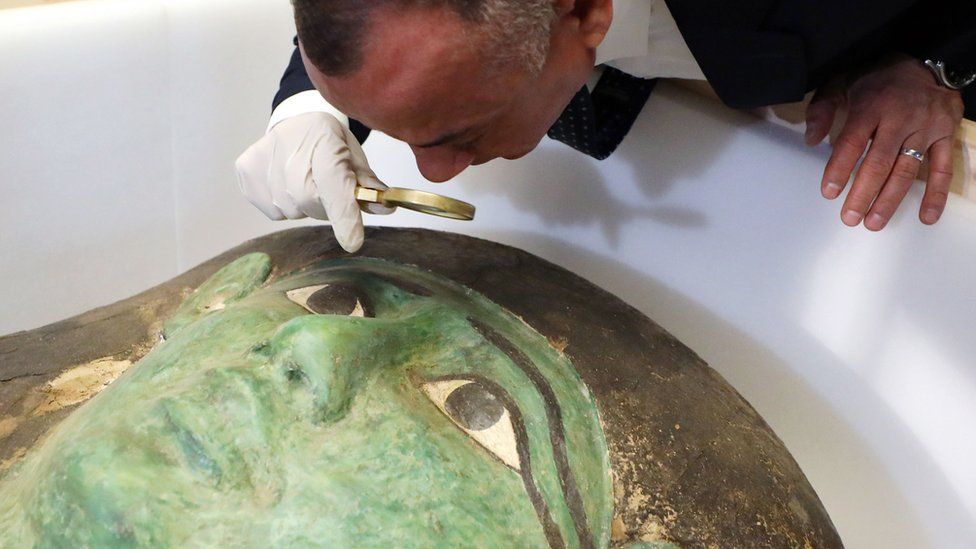A looted ancient Egyptian sarcophagus that was on display at a US museum has been returned to Egypt.
The 2.9m (9.5ft) long “Green Coffin” dates back to the Late Dynastic Period, which spanned 664BC to 332BC, and belonged to a priest called Ankhenmaat.
It was looted from the Abu Sir necropolis in north Egypt by a global art trafficking network, which smuggled it through Germany into the US in 2008.
A collector loaned it to the Houston Museum of Natural Science in 2013.
The sarcophagus was repatriated after an investigation that lasted several years and was formally handed over by US diplomats at a ceremony in Cairo on Monday. The event was attended by Egypt’s Foreign Minister Sameh Shoukry and Tourism and Antiquities Minister Ahmed Issa.

“Today’s ceremony is emblematic of the long history of co-operation between the United States and Egypt on antiquities protection and cultural heritage preservation,” said US chargé d’affaires in Egypt, Daniel Rubinstein.
Mr Issa said the return of the sarcophagus showed Egypt’s strenuous efforts to recover smuggled artefacts.
In September, Manhattan District Attorney Alvin Bragg said the Green Coffin, which was valued at over $1m (£830,000), was illegally trafficked out of Egypt by a multinational network of antiquities smugglers.
The network was also responsible for trafficking the “Gold Coffin”, which was which was returned to Egypt in 2019, the Stele of Pa-di-Sena, which is also from the Late Dynastic Period and was handed over in 2020, and five pieces seized from New York’s Metropolitan Museum of Art last year.
The US is not the only country to have returned antiquities to Egypt recently.
In 2021, Israel handed over 95 relics which had been smuggled into the country or found for sale in Jerusalem.
Last month, a university in the Republic of Ireland said it was planning to repatriate a sarcophagus, mummified human remains and canopic jars.